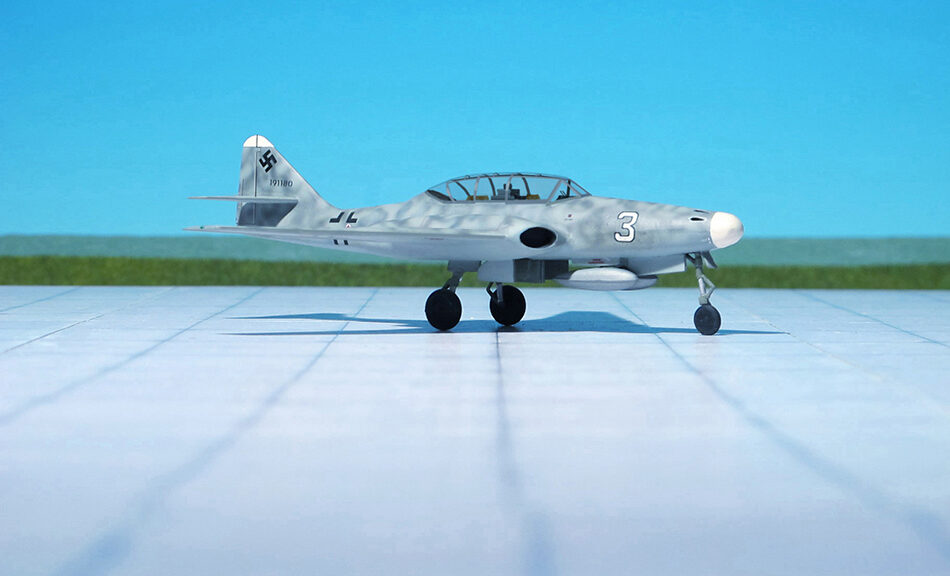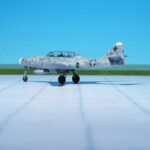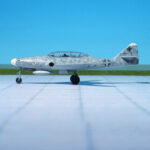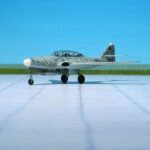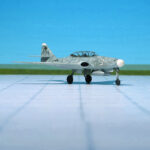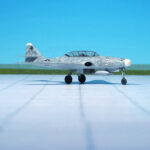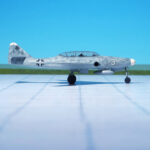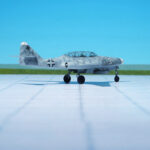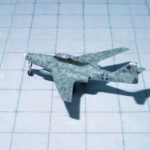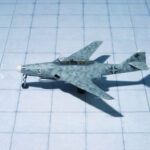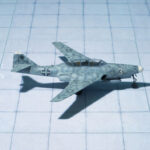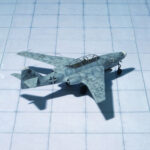TYPE: Night- and bad-weather fighter, Project
ACCOMMODATION: Crew of three
POWER PLANT: Two Heinkel-Hirth HeS 011B turbojet engines, rated at 1.500 kp thrust each
PERFORMANCE: 540 mph at 20.000 ft (estimated)
COMMENT: The Messerschmitt Me 262, nicknamed Schwalbe (Swallow) was a fighter aircraft and fighter-bomber designed and produced by the German aircraft manufacturer Messerschmitt AG. It was the world’s first operational turbojet-powered fighter aircraft and one of two jet fighter aircraft types to see air-to-air combat in World War II, the other being the Heinkel He 162. One of the most advanced World War II combat aircraft, the Messerschmitt Me 262 operated as a fighter, fighter-bomber, night-fighter ans reconnaissance aircraft.
The need for a jet-powered trainer aircraft for the Luftwaffe led Messerschmitt to develop the dual-control Me 262B-1a. The B-1a was similar to the A-1a, but had a second seat in place of the rear fuel tank. Provisions for external fuel tanks were provided to extend the range. Only 15 B-1a trainers were built, with some being modified as Me 262B-1a/U1 night-fighters. The B-1a/U1 was equipped with a FuG 218 Neptun radar and armed with two MK 108 and two MG 151 cannons. Operationally, the radar’s antenna proved to be a source of drag, but the B-1a/U1 could still outrun the British de Havilland Mosquito.
The success of the Me 262B-1a/U1 led to the development of the Me 262B-2a, a dedicated night-fighter. The B-2a had a stretched fuselage with increased fuel capacity and was to be armed with two upward-facing MK 108 cannons in a Schräge Musik (Jazz music) configuration behind the cockpit. Early models were to have been fitted with a FuG 218 Neptun radar with “antler” antennas, but later production aircraft would have been fitted with a FuG 240 Berlin radar with an internal antenna. Only one prototype was built before the war ended.
From the beginning Messerschmidt and his team were convinced that more powerful turbojet-engines and further refinements of the aerodynamic layout could increase the performance of the Me 262 to gain high subsonic or even sonic speeds.
In April 1941, Adolf Busemann, a German aerospace engineer, pioneer in aerodynamics, who in 1935 could demonstrate the advantages of swept-back wings for high-speed aircraft proposed that a 35° or even a 45° wept wing to be fitted to the Me 262 could reach speeds around Mach 1. This keeping in mind lead to the development of series of designes of Hochgeschwindigkeit- (high-speed) projecs to improve the Me 262’s performance such as Me 262 HG I, Me 262 HG II and Me 262 HG III, respectively.
With work either under way or about to commence on the serial production of the Me 262B-1a/U1 interim night fighter design, Messerschmitt put foreward several proposals for a more complete development oft he Me 262 to fulfil this role.
The first of these, published on January 1945, involved relatively small modifications to the design. The fuselage was to be lengthened by 1,5 m to provide room for the radar operator behind the pilot without reducing internal fuel tank capacity. The canopy over the men’s heads was to be made taller to accommodated the bulky FuG 350 Naxos Zc homing device scanner and the radar operator was given blackout curtains so that it could be read more easily. Radar aerials e.g. FuG 244 Bremen would naturally be fitted to the aircraft’s nose unit too.
Another, far more radical design of February 1945, inofficial named Dreisitziger Nachtjäge mit HeS 011-Triebwerken ( Theree-seated Night Fighter with HeS 011 jet engines) featured the possible inclusion of a third crewman – a navigator – within the stretched fuselage and a pair of Heinkel/Hirth HeS 011 engines burried in the aircraft’s wingroots. The wings themselves would also have a 45 degree sweepback, compared to the standart Me 262’s sweep of 18,5 degrees. For take-off up to four solid-fuel rockets of Rheinmetall-Borsig could be attached under the fuselage. This design is comparable to the much smaller Me 262 HG III project. So as many other Me 262 designs all work was terminated with the end of WW II (Ref.: 24).
